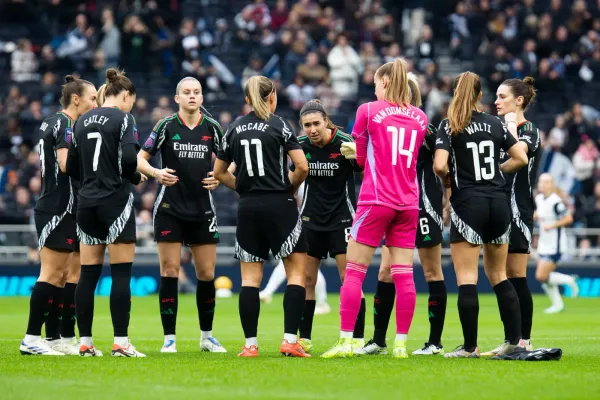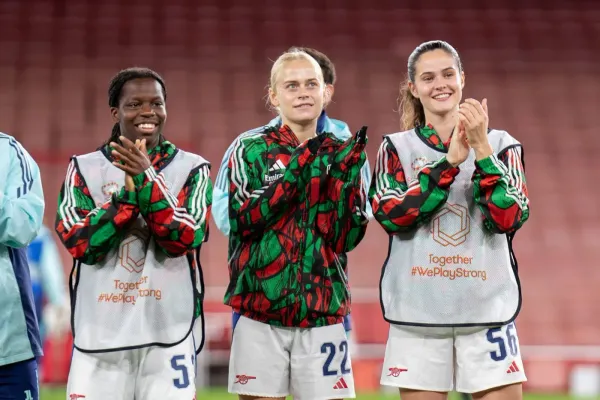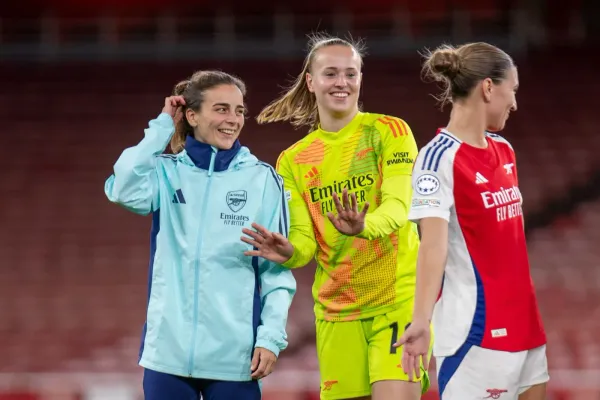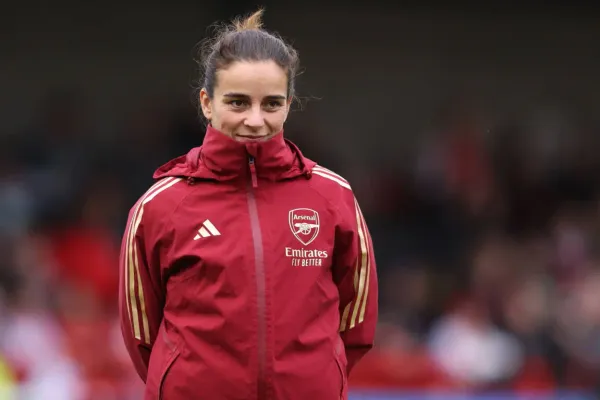One club. Two teams.
The same but different
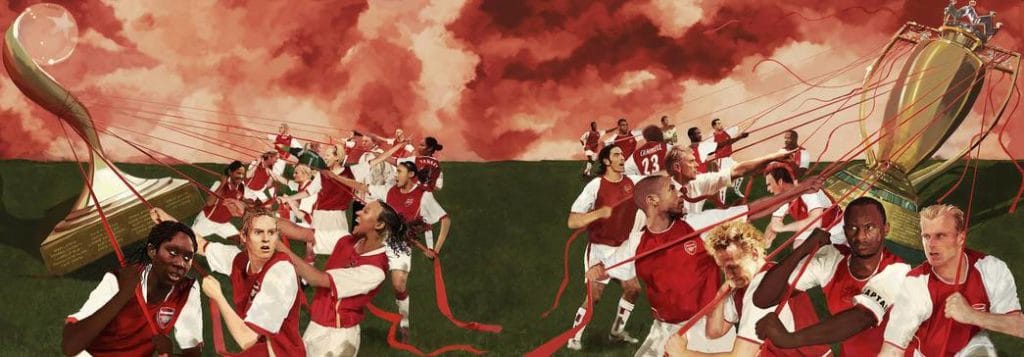
Back in 2017, I interviewed Gemma Avery, who was, at that time, the Marketing Officer at Arsenal Ladies and remains a good friend. In that interview, we talked about the ‘branding’ of the women’s team. Reading the interview back now, you see that women’s football and Arsenal Ladies (they didn’t rebrand to ‘Arsenal Women’ until a few months after the interview) was in a very different space.
One of the things that Gemma talked about, was the balance between showing that Arsenal, men and women, are one club and have a one club mentality. But she also talked about how the women’ team should have their own identity too. “We understand that we are different and we don´t want to replicate everything the men are doing. We have a different audience and a great history of our own.”
Thanks for reading Arseblog News - Arsenal Women Newsletter! Subscribe for free to receive new posts and support my work.
At the time, Manchester City had just taken the decision to integrate the Twitter feeds for the men’s and women’s teams, only using the Manchester City Women account for match updates and post-match press conference quotes from Gareth Taylor. That has remained the case ever since. It’s a nice idea but, in practice, I personally find it a little fiddly. When you want to find news about the women’s team you have to scroll through a lot of men’s team related tweets.
I wonder if City lose something, in a social media sense, by doing that but I am no marketing expert and I am sure it is a policy they keep under review with brains more attuned to marketing and social media than mine. What has interested me about Arsenal’s approach, is how they have become brave enough to really market their women’s team separately, in much the way that Gemma suggested to me back in 2017.
Last year, I was invited to be on the steering group for the new artwork on the Emirates Stadium wrap. I don’t really know why I was invited, other than I am on a few supporters groups here and there. But I decided that if I was going to attend the steering group meetings and do something meaningful, then I was going to lobby for strong representation of the women’s team. You know the great thing, though?
I didn’t have to. There was a total consensus that they should not only be included, but foregrounded. Even Arsenal supporters who didn’t take enormously engage with the women’s team just considered them a part of what makes Arsenal Arsenal. My sense from the 1990s right up until maybe about 5-6 years ago that the engagement of the average Arsenal fan with the women’s team was to see them at half-time on the last men’s home game of each season, parading all the trophies they had won that particular season, to polite applause.
Then they would go away again and come back next May with another armful of trophies. It was sporadic but it clearly left some kind of impression on the fan base, even if only cerebrally. The success of Arsenal Ladies was something Arsenal fans were very conscious of, even if they didn’t engage with it on anything other than an annual basis. That sense of history gives Arsenal a big head start on every other women’s team in the country, in a commercial sense.
It means that images of Anita Asante, Faye White, Rachel Yankey, Kelly Smith and Jayne Ludlow are daubed onto the side of the Emirates Stadium, which is becoming increasingly integrated with the women’s side. The media for new signings and contract renewals for the women’s team are pretty much always shot at Emirates Stadium now.
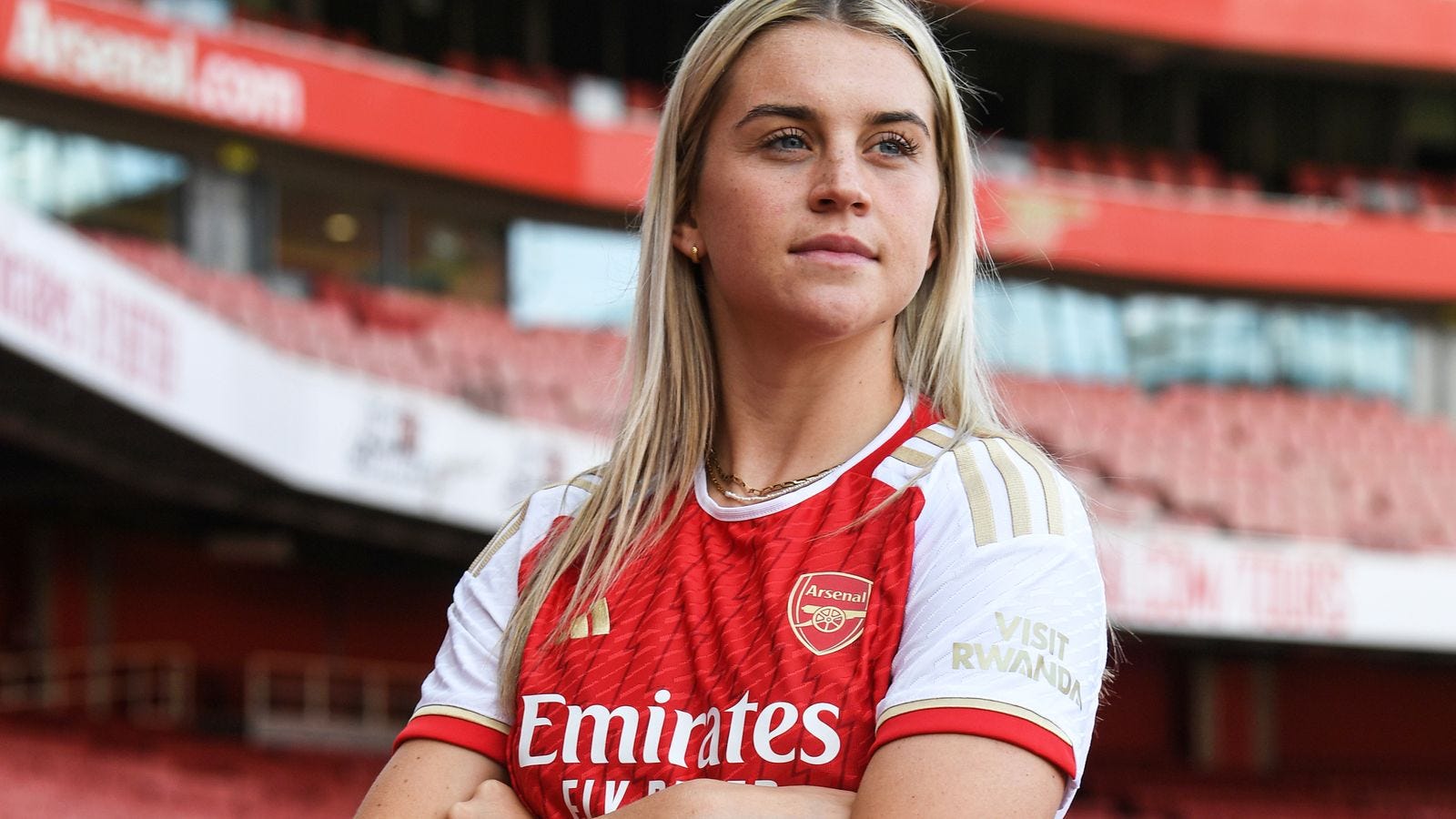
Arsenal have led the boom in women’s football attendances in the UK with an integrated marketing strategy. The club has a steering committee for the women’s team which takes in staff from marketing, ticketing, media relations and social media and content. In that sense, the approach shows integration. Clearly, the Lionesses success at the Euros last summer turbocharged the interest in women’s football in the UK.
Arsenal have now been able to capitalise on the fact that Leah Williamson, Beth Mead and Alessia Russo are household names and brands in their own right. I understand that image rights are really beginning to come to the fore when it comes to contracts and signings in the women’s team. Essentially, Arsenal Women are standing on their own feet in a branding sense, harnessing the Arsenal brand but not as an identikit arm of the men’s team, as an operation and a team in its own right.
When selling tickets for women’s games at the Emirates, none of the men’s players have been involved in the marketing. There has been no rallying message from Mikel Arteta, no tweets from men’s team players. That has, I believe, been deliberate. The thinking now is that Russo, Williamson, Mead, Miedema and co are strong enough ‘brands’ in their own right to sell tickets, that they do not need the men’s team to help.
For the opening game of the WSL season against Liverpool at the Emirates, what struck me was the number of shirts I saw that were personalised with the names of women’s players. Personalisation of merchandise is a huge deal for women’s football fans, as I discussed with Helen Hardy, founder of women’s football merchandising company Foudy’s, earlier this year.
For a start, women’s football culture has always been quite player led. You will often find that fans start supporting a club through an admiration for a specific player. Secondly, and this is something brands and marketers have ignored for far too long, there are lots of people who support the women’s team that couldn’t care less about men’s football, or else who support another men’s team entirely.
Personalising the shirt is a way of making it distinct and making it clear, “I support Arsenal WOMEN.” All over the Emirates that day I must have seen over a thousand shirts with WSL personalisation. I saw two shirts with the names of men’s players on the back (and, to be clear, there is nothing wrong with coming to a women’s game with a men’s player on the back of your shirt).
In September, Arsenal partnered with Stella McCartney and adidas to release their first ever bespoke kit for the women’s team. It sold out in adult sizes in around 48 hours. I’ve long argued for the club- and adidas- to be bold enough to release a bespoke kit for the women’s team. Because there is an individual identity at Arsenal Women that people really value.
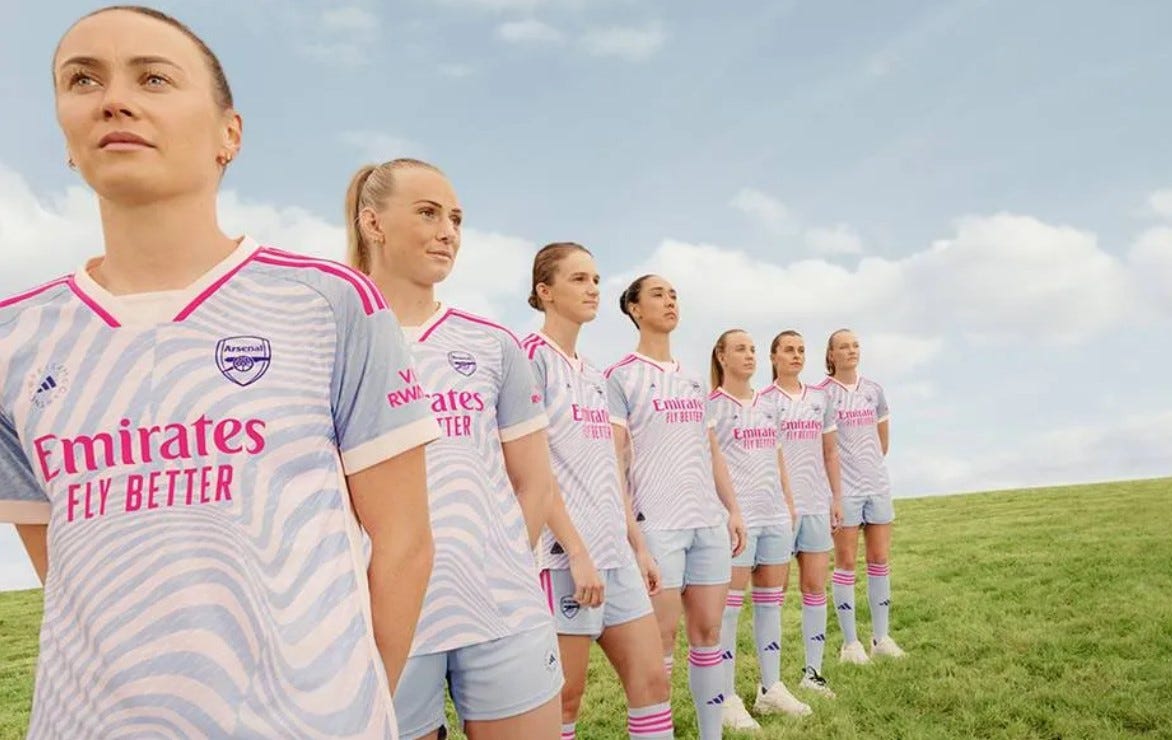
The fans of the women’s team enormously value it but, as I found out in the steering group meetings for the stadium wrap, pretty much all Arsenal fans are at least aware of it and a lot are very proud of it, even if only in a tangential way. Now a lot of the players are becoming big stars in their own right, the club is regularly selling tens of thousands of tickets for home games, away ends are packed out every week and now, now Arsenal can market their women’s team in its own right. One club, two teams.
Thanks for reading Arseblog News - Arsenal Women Newsletter! Subscribe for free to receive new posts and support my work.

